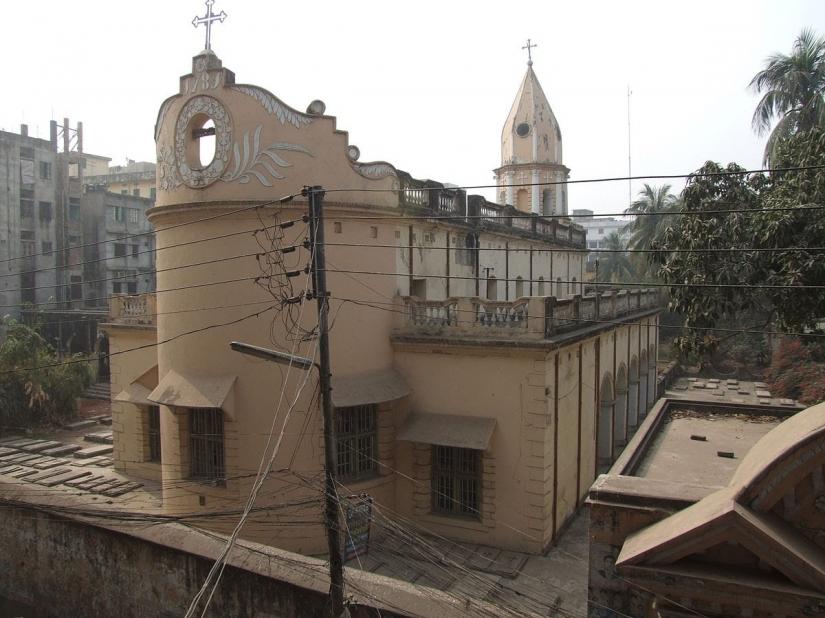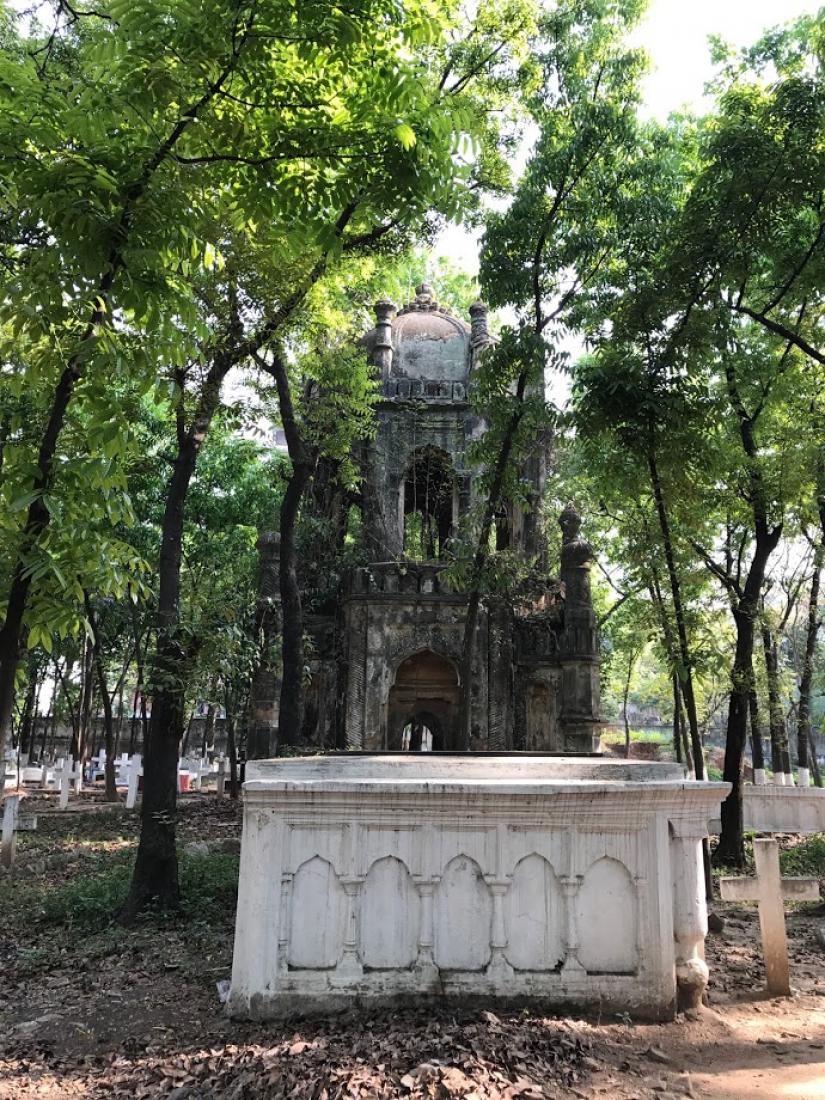Dhaka, a city with 400 years of rich history and heritage, has surprisingly lower number of colonial structures when compared with Kolkata. The city evolved from a military outpost to a trading post and finally the Mughal capital of Bengal. As a trade and production centre, the city was bustling with businessmen from many countries and race. Almost all the European merchants and their respective ‘East India Companies’ at least had a factory here. Most of them also settled here and erected quite a few structures in the city. Nevertheless, the city still has few of them and remaining, scattered in different areas. Some of them, which deemed prominent and fairly significant in the history of Europeans in Dhaka; are featured in this article.
 Northbrook Hall
Northbrook Hall
Northbrook hall is situated on the bank of river Buriganga at Banglabazar in Dhaka which lies on the old Road leading to Narayanganj. The hall is named after Lord Northbrook who was the governor general of India between 1872 and 1876 and visited the city in 1874. It was originally meant for a town hall but later converted into a public library. Later a club house was added to its south east and called Johnson hall.
The building is an unique attempt on the part of the local masons to revive the old Mughal style architecture but the result has been totally different. It can be best described as an amalgamation of an edifice of European taste with few incorporation of architectural elements that are predominantly Muslim. From the riverside it gets a fine view of the with pinnacles and ornamented parapets and from the city side the building appears grandiose. The magnificent brick red color of the walls stand out most prominent in the surrounding.

Armenians settled and founded a colony at Dacca in the early part of the 18th century when, it was one of the principal commercial centers in Bengal. Prior to the erection of the present Armenian Church, the Armenians of Dacca worshipped at a small chapel which they had built in the locality known to this day as Armanitola.
In 1781, the present beautiful church of the Holy Resurrection was erected on the site of the old chapel, by subscriptions from Michael Sarkies, Astwasatoor Gavork, (George) Margar Pogose and Khojah Petrus. In 1837, a beautiful steeple, which was to serve as a clock-tower, was erected on the west of the church, near the belfry, but it fell down during the severe earthquake which damaged many old buildings, in June 1897. There was an oil painting of this bishop in the Dacca Armenian Church, by a well-known European artist, but it was taken away by the late Archbishop Sahak Ayvadian in 1907.

Greeks also had a very good business in Dhaka, and they have built a church in the old part of the town at present day Muqim Katra (near Chawk Bazar) in 1821. But the church fell down in the earthquake of 1897 and there is no trace of it now. There used to be also a Greek cemetery in Shujatpur, present day Ramna area. The site of the old Greek cemetery was observed by Davidson (a British army officer who visited Dhaka in 1840) and also mentioned its poor condition. From an article appeared in a Kolkata newspaper 'The Statesman' on 29th February 1915, it can be known that the cemetery was in ruins and the locals were stealing the tombstones.
Finally Lord Carmichael, the governor of Bengal ordered the construction of a monument for the protection of the Tomb. The monument was erected in 1915 with financial assistance from the Greeks (the Mangoes and Ralli brothers) in the city. 6 years later when Dhaka University was established in 1921 the Greek monument was left undisturbed and it can be seen today inside the Teachers Student Center (TSC) compound. At present this is the only structure that remains as of the presence of the Greeks in Dhaka.

The Anglican cemetery is situated in the then Northeast corner of the city, present day Narinda. It was consecrated by bishop Heber in 1824. He described it as being about a mile distance from the inhabitants and inhabited portion of the city; surrounded by the wilderness or jungle. He saw elephants with 'mahouts' roaming around in that area. The cemetery still had plenty of space back then and was tastefully laid out with avenues.
The most prominent object is a 'moorish' Gateway which now stands almost at the centre of the enclosure and a monument which was known as 'Mr Colombo's Tomb' to the locals. The original cemetery must have been considerably larger and had more tombstones. It is unknown from when the cemetery was there. It is shown as a burial ground in the Rennell's map (1780-1781). There are few plaques which were from 1724-1725, so it can be assumed that, the place has been used as a cemetery from late seventeenth or early eighteenth century.
 Holy Rosary Church at Tejgaon (Portuguese Church)
Holy Rosary Church at Tejgaon (Portuguese Church)
Portuguese were the first European to reach and settle in Dhaka. In late sixteenth or early seventeenth century, they bought two villages in Bhowal, and most importantly a piece of land in present day Narinda. There have definitely been a church built in Narinda, in the early seventeenth century. At present, there is no trace of that church, but it was most probably within the present day Christian Cemetery. It was the first church in Dhaka. They have also officially established a mission in Dhaka about 50 years earlier than the viceroyalty of Shaista Khan (1664-1688) in 1616.
The church which still exists today is the Holy Rosary Church at Tejgaon. In the accounts of James Taylor in 1840, he wrongfully assumed that the church at Tejgaon was built in 1599, by the Portuguese missionaries. He also thought it was probably first erected by the merchants even earlier than that, like the way other churches were established around the subcontinent. Actually the church at Tejgaon was built about 80 years later. Most of the sources say, it was established in the late seventeenth century (Dani stated the present church was built much later in 1677; it is 1679 according to Taifoor). Still, this makes it the oldest existing Portuguese structure in Dhaka.


